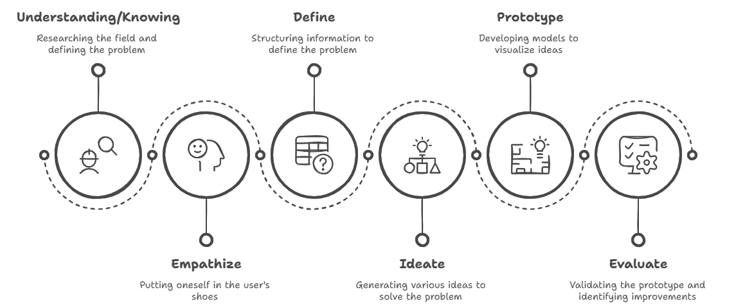Design Thinking Model Based on Plithogenic Logic for the Management of Entrepreneurship and Innovation in Higher University Education in Peru
Keywords:
Management, Higher Education, Higher Education Management, Design Thinking, Plithogeny, Neutrosophy, Plithogenic LogicAbstract
Design Thinking is a methodology that has been gaining popularity in the business world and also in higher education management. This methodology proposes a set of steps to follow, with the client and the human being at the center of attention. It encourages the search for creative and collaborative solutions to problems. The role of Design Thinking in entrepreneurship and entrepreneurship management for higher education lies in its contribution to innovation in business management within this field. The development of skills in Design Thinking fosters creativity, innovation, and critical thinking in students, improving their problem-solving and project development skills. The incorporation of Design Thinking is recommended in educational programs to strengthen entrepreneurial skills and prepare students for market challenges. In this paper, we propose a plithogenic model for the implementation and evaluation of Design Thinking in the management of entrepreneurship and innovation within Peruvian higher education. Design Thinking is consistent with a more humane and inclusive education. Plithogeny is a theory dedicated to modeling cases of multidimensionality, when there is a dynamic between concepts of different origins, as well as their opposites and neutrals. Plithogenic Logic is a pluri-logic, composed of various truth values for the various variables that make up the phenomenon being studied. Due to the complexity of the Design Thinking model, which is composed of various dimensions, we rely on the plithogenic logic, where the degrees of truthfulness, indeterminacy, and falsity of compliance of each variable are taken into account.
Downloads

Downloads
Published
License
Copyright (c) 2025 Neutrosophic Sets and Systems

This work is licensed under a Creative Commons Attribution 4.0 International License.






